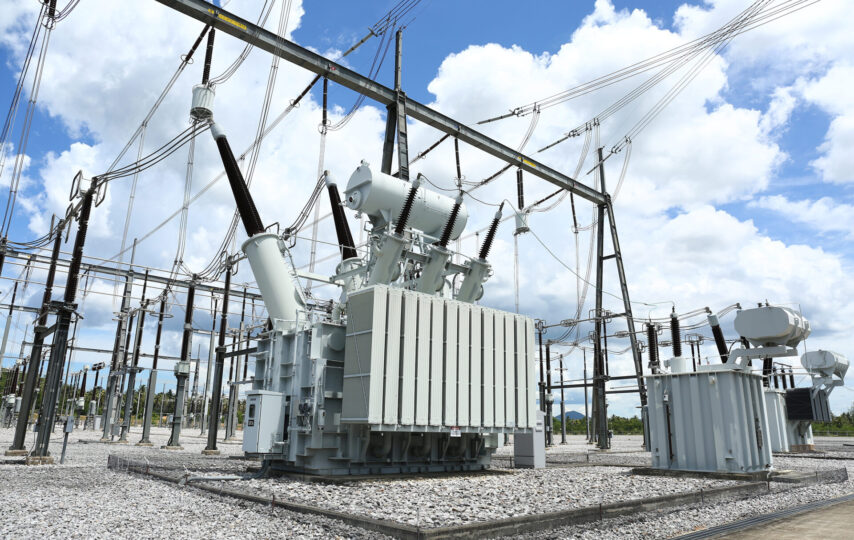Electric transformers are critical components in electrical systems. They facilitate the efficient transmission and distribution of electrical energy across vast distances. These devices ensure that electrical power is delivered at the appropriate voltage levels, making it suitable for industrial and residential use.
Understanding the various types of transformers, their specific functions, and the considerations for purchasing them is essential for anyone involved in electrical engineering or facility management. This article discusses the core functions, varieties, and expert buying advice for power transformers.
A brief intro to these transformers
These are electrical devices that transfer electrical energy between two or more circuits through electromagnetic induction. They are designed to increase (step-up) or decrease (step-down) voltage levels between circuits, ensuring that electrical power is efficiently transmitted over long distances and then appropriately reduced for safe use in homes and businesses. They are vital in minimizing energy losses during transmission and maintaining the stability and reliability of power systems.
Key Functions in Electrical Systems
Their primary function is to alter voltage levels. They are crucial in transmitting electricity from power plants to substations and eventually to end-users. By stepping up the voltage, transformers reduce the current, which minimizes resistive losses in the transmission lines, thereby enhancing efficiency.
At the receiving end, step-down transformers reduce the high transmission voltage to safer, usable levels. They help in isolating different sections of the power grid, enhancing system stability and protection.
Types of Transformers
These transformers come in various types, each tailored to specific applications and operational requirements. The major categories include:
- Distribution Transformers: Used to distribute electricity to end-users, typically operating at lower voltages. They are essential for converting high voltage electricity from power lines to lower voltages suitable for residential and commercial use.
- Power Transformers: These are employed in transmission networks for stepping up or down voltages, usually handling higher voltages and capacities than distribution transformers. Their efficient operation is crucial for minimizing energy losses during long-distance electricity transmission.
- Autotransformers: Utilize a single winding for both primary and secondary sides, offering cost and size advantages in specific applications. They are often used in applications where a small voltage change is required and can be more efficient than conventional transformers.
- Instrument Transformers: Include current and voltage transformers used for measurement and protection in power systems. These transformers ensure the accuracy and safety of metering and protective devices by scaling down high voltages and currents to manageable levels.
Distribution vs. Power
While both transformers serve to alter voltage levels, their roles and operational contexts differ significantly. Those for power are designed for high-voltage transmission networks and typically handle larger capacities. They operate at peak efficiency when running near full load, making them ideal for power generation and long-distance transmission.
In contrast, distribution transformers deliver electricity to end-users at lower voltages, such as in residential or commercial settings. They are designed to operate efficiently over a wide range of loads, often experiencing varying demands throughout the day.
Step-Up and Step-Down Transformers
Step-up transformers increase voltage from the primary to the secondary winding, which is essential for long-distance power transmission. By increasing voltage, these transformers reduce current, thus lowering resistive losses and enhancing efficiency.
Conversely, step-down transformers reduce voltage from the primary to the secondary winding, making them suitable for residential or industrial use. Both types are fundamental in the power distribution network, ensuring electricity is transmitted efficiently and safely from generation to consumption points.
Core and Shell Transformers
Transformers can also be classified based on their core construction: core-type and shell-type transformers. Core-type transformers have windings wrapped around the core’s limbs, while shell-type transformers have windings enclosed by the core.
Core-type transformers are more common in high-voltage applications due to their efficient cooling and easier maintenance. Shell-type transformers, on the other hand, offer better short-circuit strength and are often used in low-voltage applications.
Critical Factors to Consider When Buying
When purchasing transformers, several factors must be considered to ensure optimal performance and longevity:
- Voltage and Power Ratings: Select a transformer that matches your application’s voltage and power requirements. It’s crucial to ensure the transformer can handle peak loads to prevent potential overloading and damage.
- Efficiency: Higher-efficiency transformers reduce operational costs and energy losses. Investing in a high-efficiency transformer can result in significant long-term savings on energy bills and reduced environmental impact.
- Cooling Methods: Depending on the operational environment, choose between oil-cooled or air-cooled transformers. Proper cooling not only ensures optimal performance but also extends the lifespan of the transformer by preventing overheating.
- Regulatory Compliance: Ensure the transformer meets relevant industry standards and regulations for safety and performance. Compliance with standards such as IEC or ANSI guarantees that the transformer operates reliably and safely within specified parameters.
Understanding the functions, varieties, and critical considerations for purchasing power transformers is essential for optimizing their performance and ensuring the reliability of electrical systems. By carefully selecting the right transformer and maintaining it properly, you can enhance the efficiency and stability of power distribution networks.








